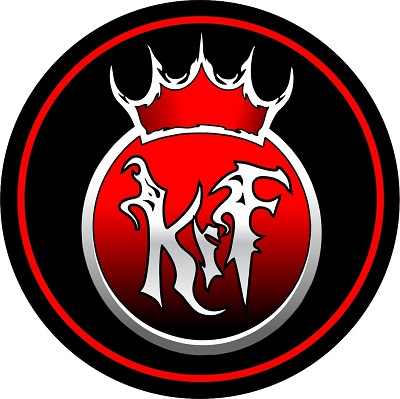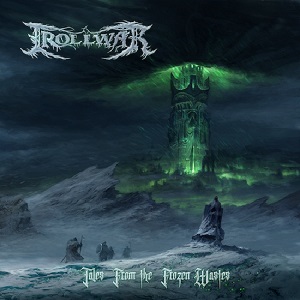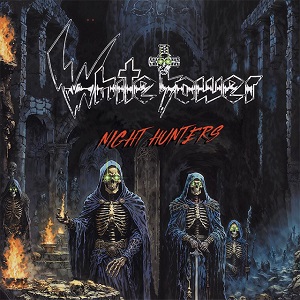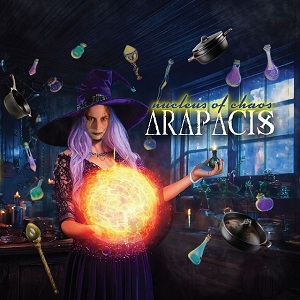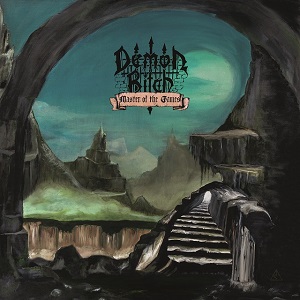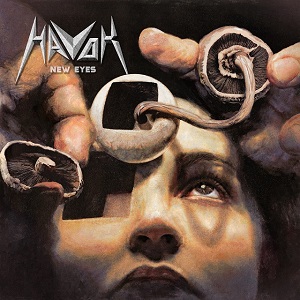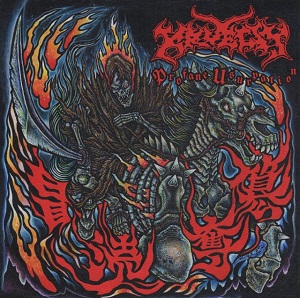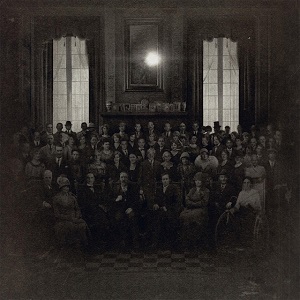FOGHAT – "If Life Was Easy, It Might Be Boring; My Life Isn’t Boring”
June 21, 2016, 8 years ago

Thumping ‘70s arena rockers Foghat have seen the wars, including the deaths of guitarists Dave Peverett and Rod Price, and the shocking battle with brain cancer the band’s beloved bassist Craig MacGregor has been going through. But this “not very boring” life for founder Roger Earl spins on with classic rocking energy, with the modern-era crack band, a spate of dates through the summer, and a whole bunch of new friends—and some old ones—on the band’s new record Under The Influence.
The current platter is a complicated record of riffy originals and earthy covers transformed, and mostly brisk and upbeat despite the blues roots of the thing. Near every song has a story, but as Roger explains, the main part of the tale is in the record’s construction, with a Nashville twist.
“Well, the thing is, it’s been in the making for years,” begins Earl, down the line from his New York houseboat abode, I imagine. “I think what tends to happen when you put the band in charge, it’s gonna take forever. But we were recording in Florida, and Bryan and I met Scott Holt, and then we started writing a number of songs with him. But I really should go back to about four years ago. I was a presenter at the Memphis Blues Awards, and I presented three awards to Buddy Guy. And it was an absolute thrill meeting Buddy Guy, and I carry a picture of me shaking his hand and offering him one of his prizes. It was a real thrill. Anyway, Tom Hambridge was his co-producer and co-writer on a particular album and I think he’s done about four albums with him actually, Tom Hambridge. And later on, after the awards were over, we went back to the hotel and went back to the bar like we often do, and I met Tom there. And we were talking—nice guy and a real talent too. He was a big fan of Foghat’s music, and said he would love to produce an album with us at some time.”
“So, I kind of put that on the back burner,” continues Roger, “and we’re about halfway through this album, we’d done a number of songs and it wasn’t quite working out. You know, Bryan had to do like triple duty, producing, writing, recording and playing guitar. That’s probably four things, I think. And actually, our manager, Linda, suggested, ‘Why don’t you talk to Tom Hambridge?’ And I said ‘No! We won’t do it’ (laughs). No, I didn’t say that at all. I said, ‘What a good idea’ (laughs). And, initially, our first conversations with Tom, I said look, maybe you could come down to Florida to our studio, meet everybody, and just see if there’s some magic in the air, for want of a better word.”
“And he came down the first time, and I think we wrote or finished like two or three songs together. He also then wrote some songs specifically for us in that break, and then he came again and we worked on some more songs, including the title track, and it just worked. I mean, Tom, the way he handles everybody in the studio is amazing. I’ve worked with a lot of producers and done my time in the studio, but Tom had a really, really cool and relaxed way of handling it. Sometimes you can go in the studio and, you know, you’ve got like four or five, six people, that are very individual and may all be wired a little different. But Tom manages everybody in the studio so well. And I think—well, I know—he gets the best out of everybody. It was really, really exciting; a lot of fun working with him.”
Foghat’s done a lot of blues covers as part of their official recording canon as of late, but this is different. Everything is high energy, and seamlessly mixed in with the band’s patented traditional hard rock, evocative of ZZ meets Deadly Ted Nugent, but of course, a boogie rock nation unto itself. So what’s the motivation for this particular style of cover?
“I think the title says it all,” reflects Roger. “And in fact, Linda came up with the title ages ago, because we were talking about doing different songs that influenced us. And of course, Linda, being the bright one that she is: Under the Influence. And that set the tone for what we wanted to do. There were a couple of Savoy Brown tracks on there. And Charlie (Huhn, guitars and vocals) has always been a huge Savoy Brown fan, and course that was a large part of my life; Kim Simmonds gave me my first real job as a musician. So yeah, it just seemed a good way to approach the album. Our previous album was mostly a blues album; we only wrote like two or three originals. But this album, there’s a lot more… It was our influences, like the heavy rock ‘n’ roll, the bop, the blues. I was really, really pleased with the way it sounds and the way it turned out.”
“But again it was probably down to Tom getting the best out of everybody, and he really had a great way of mixing—I really enjoyed his mixes. Bryan Bassett actually mastered the record, but Tom was the one who mixed it, and he did a fantastic job. One of the problems, I think, we might’ve had when Bryan... Bryan is an absolute genius as far as I’m concerned. But I think he is so close to the band that sometimes when we would send references to him, we’d say, “The guitars aren’t loud enough” (laughs). Because Bryan hears his guitars anyway. So, he’s listening to everything else to make sure that it’s up in the mix. But yeah, I think Bryan also really enjoyed working with another producer, because it gave him time just to play guitar and get the most out of his instrument. And it was also a lot of fun just being in the studio with like Kim and Bryan and Scott Holt and Charlie. You’ve got like four great guitar players there. It was pretty exciting. You know, everybody playing together.”
As an Under The Influence bonus track, there’s an anniversary version of eternal Foghat classic “Slow Ride,” personnel’ed poignantly, as Roger explains.
“Well, it’s the 40th anniversary, or it was, and basically, I just wanted to give a nod to Dave and to Rod, because they were such a huge part of this band. And Nick Jameson agreed to come down to play, and Craig MacGregor is also playing. Nick did the original version in the studio, and produced the album, Fool For The City, and Craig played on the live version of ‘Slow Ride’. So I thought it would be really cool to have both bass players on there. We had to make some room for two bass players. And it only took one take anyway (laughs). But it was a lot of fun playing with Nick, and also Nick Jameson played on a couple other tracks as well. I’ve always enjoyed working with Nick. He was a huge influence on my career and my attitude to playing, and how I worked in the studio. I probably learned more from Nick Jameson than any other like singular artist and producer. Nick and I remained friends over the years, so it was really, really cool playing with him again.”

Lead single, “Upside Of Lonely,” like everything on here has got a story, and even a history...
“That was written by Tom Hambridge,” begins Earl. “We have friends down in Nashville, and we were staying down there, and Tom was doing an In the Round at the Bluebird Cafe, which was kind of interesting, because Tom is a drummer. Anyway, it might’ve been the first time they had an In the Round in a club where Tom would be playing his snare drum, and he’s surrounded by four other guitar players. Anyway, he did, and he played “Upside of Lonely,” but he played it as a slow blues. And I just loved the lyrics. I mean, it’s funny, and just the title itself, “Upside of Lonely,” everyone can relate. It’s a blues song, but it’s turned around, because you think, hold on a second, it’s really cool to be lonely. I can leave my dirty clothes in a pile on the floor, and I can smoke a big cigar in my living room, etc. I really enjoyed that.”
“But anyway, we were in our studio down in Florida, and Scott Holt was down there, we were working on songs together and I played him the lyrics to that song, ‘Upside Of Lonely’. And I said I want to do more of a Stax or Memphis kind of attitude on it. I said, you know, anybody can do yet another slow blues. But I want to put a different attitude to it, which, again, to be like Memphis/Stax Studios. They were huge influences; they influenced so many people and so many artists, that any time you go to Memphis, you can go to any number of bars and clubs down there and you have great, great bands, with horn sections that just know what they’re doing. There’s a trumpet and a sax, but it sounds like it’s just this monster sound coming off the stage. So I think that was what Scott and I tried to do with ‘Upside Of Lonely’, put a different attitude to it. I think it works. Tom was impressed with the way it turned out. And in fact, I played it a couple of times on stage with Scott, when we go out as Earl & The Agitators, and I think we’re going back down to Florida after the next couple of shows and we’re going to incorporate some of that into our set as well. We’re gonna start playing that.”
That’s right, so you’re going to pull double duty, playing drums for both Earl & The Agitators and Foghat on some of the upcoming dates, is that correct?
“Yeah (laughs). The reason was, I mean, I got on so well playing with Scott Holt and I love the way he plays guitar. And he is also a great singer. I mean, anybody who has played with Buddy Guy for ten years has to be really good. And it also gives me a chance to play in a more traditional manner. I say traditional, like, picking our songs. There’s a lot of stuff I can do with Scott, like more country-influenced things, more bluesy things, which wouldn’t really fit, I don’t think, on stage with Foghat. And again, it’s because I have so many influences, as far as music goes. And also, I like playing a bit longer. Gives me the chance to play for two-and-a-half hours instead of an hour-and-a-half (laughs).
I’m not ready to let go yet—I want to play. When I come off stage, I want to be sweating, and I want to be tired and I want my hands to hurt (laughs).”
(Roger Earl photo by Steve Reinis)


